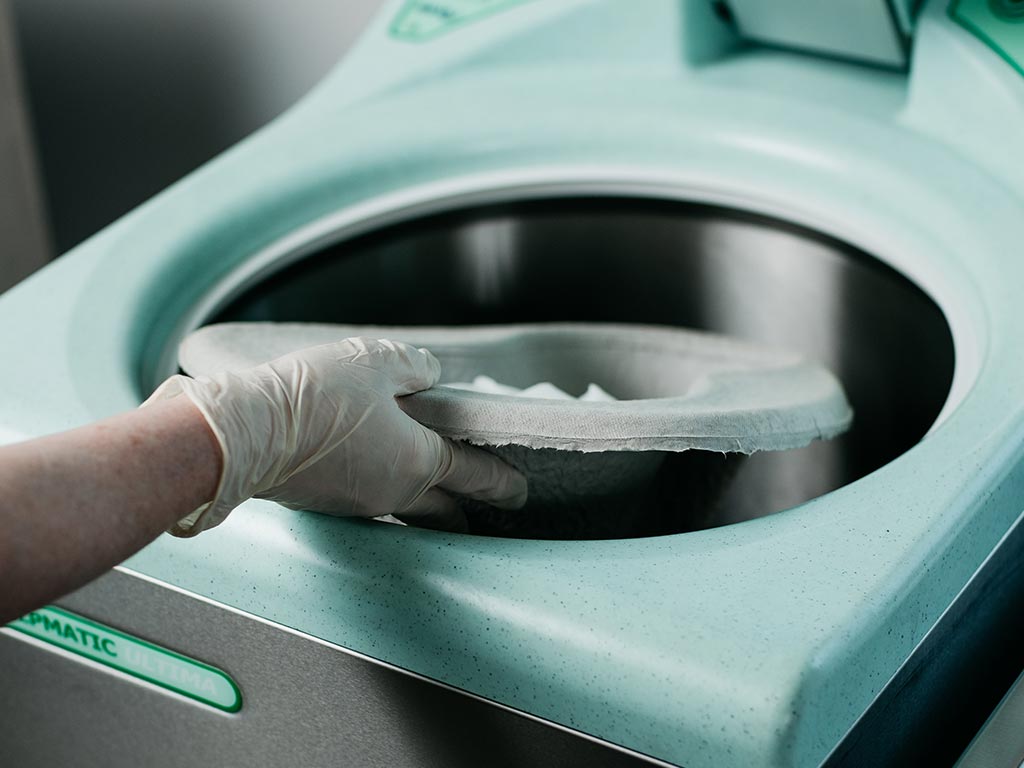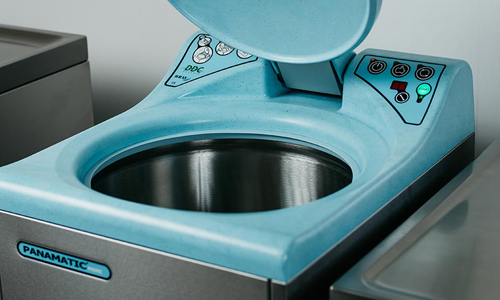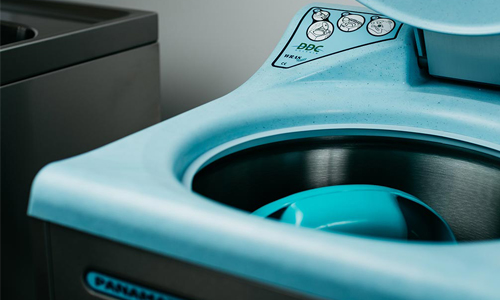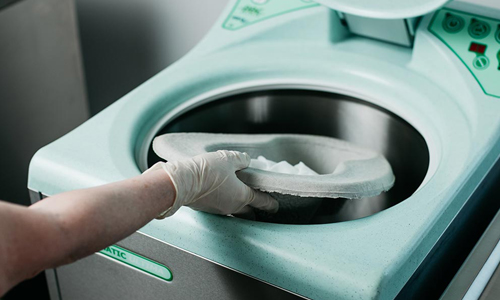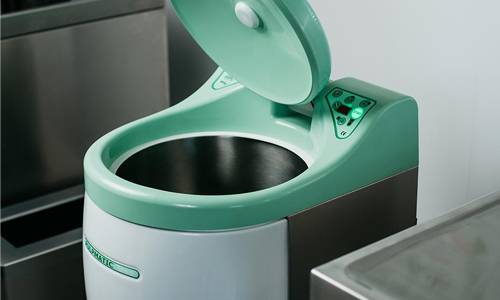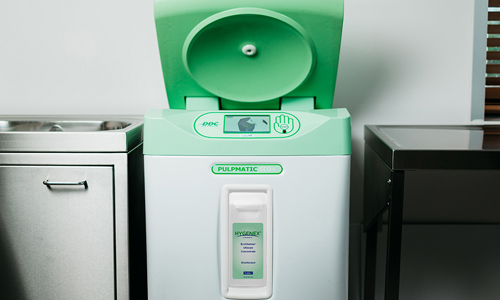10 Golden Rules For Effective Macerator Use
The hygienic, clinical disposal of human waste products is rarely more efficient then when a macerator is used.
Our ‘10 Golden Rules’ explain how best to utilise your maceration equipment, so the highest level of infection control can be achieved at your medical facility.
For many institutions, medical pulp and incontinence pad macerators are an essential piece of infection prevention kit.
Human waste is an acute carrier of bacteria and, given the nature of medical settings, care staff are often on the front line of its management.
With thorough controls in place, patients and staff can be kept safe from the infections that human waste harbour; drop the ball, however, and those same people can suffer the devastating consequences of HCAIs.
When the collection and disposal of human waste is a necessity – such as with bedbound or incontinent service users – a macerator can provide a comprehensive solution. Using a series of blades, waste products are pulverised into tiny particles and then flushed through the sewerage system; eliminating the need to put such products into bins, or other less sanitary methods.
With this in mind, how can you ensure that a macerator will serve you well?
1. Consider if a macerator is the best choice for your facility.
There are many options available to healthcare institutions when it comes to infection control, as well as the handling of human waste disposal.
If your facility is predominantly relying on re-usable bedpans for patient care, it may be in your best interest to focus attention on washer-disinfectors as a hygiene solution.
However, if your facility is finding single-use pulp products to be the most economical and effective way to handle patient needs, a macerator is highly recommended over other forms of disposal, such as bagging and binning.
Considering the best long-term approach to infection control is essential, no matter which equipment you’re looking to use.
2. Only use a macerator to dispose of what it’s designed to.
A macerator is an extremely effective waste disposal measure – but you can’t throw whatever you like into it (at least, not without unpleasant and expensive consequences).
A pulp macerator will dispose of pulp products (such as single-use bedpans and urinals), human waste, toilet paper and maceratable wipes – nothing more.
Similarly, an incontinence macerator is only to be used for pads and nappies.
There are many other forms of medical waste that should never be put into a maceration cycle – towels and cleaning cloths, personal protective equipment, non-maceratable wipes, syringes, metal and plastic, to name a few.
These items should always be disposed of using an alternative strategy, such as incineration, and your facility should have clear guidelines to this effect.
If you put a foreign object into your macerator, you’ll break it – plain and simple.
Whether this breakdown is revealed to be down to jammed blades or unpleasant clogging, the result is likely to be much the same – additional cost for repairs and a dangerous lack of efficiency, while you are forced to find alternative disposal solutions.
The latter, most critically of all, could expose your patients and staff to infection.
3. Macerators have a fixed capacity – don’t overload it!
The variety of macerators available from DDC Dolphin will allow you to select the machinery which best suits your needs; practicality of size, ward footfall and budget are all factors to take into consideration.
The Pulpmatic Ultima, for example, will dispose of up to 6 pulp items per cycle (which takes only minutes).
If you need something a little smaller, the Pulpmatic Uno will easily handle 1-2 pulp items.
Exceed the stated capacity, however, and your machine could experience the same consequence as if you loaded it with something completely unsuitable; a catastrophic lack of service.
4. For peace of mind, a Planned Preventative Maintenance contract is strongly advised.
When you take out a 360° Service contract, you protect your facility from the consequences of broken machinery. Infection risk, damaged reputation and excessive repair costs are all part of the possible aftermath when a macerator breaks down. By investing in planned preventative maintenance, you can stop many engineering issues before they happen – as well as having access to impeccable emergency repair provisions, should the unavoidable occur.
The future of your infection control strategy should never be left to chance.
5. Thorough staff training will help your macerator to perform at its best.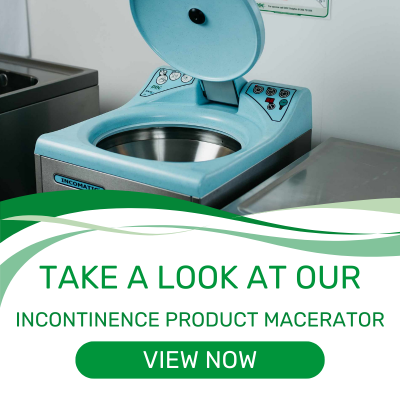
Your macerator is subject to human operation and, therefore, possibly human error too.
Overloading your machine, filling it with unsuitable content and having a poor understanding of infection control procedures could all lead to a crisis; broken equipment, expensive repairs and putting patients at life-threatening risk are all in the realm of possibility.
Providing regular macerator training to clinicians will significantly reduce danger to patients, staff and your bottom line.
6. Remember your personal responsibility towards infection control.
A macerator can form an integral part of an effective infection control strategy. However, it’s still only one part of the chain; fall short in other areas and your facility could still come unstuck.
DDC Dolphin macerators are fitted with patented hands-free technology, to help prevent cross-infection between the caregiver and machine. However, if your caregivers aren’t scrupulous over good hand hygiene (or insist on touching the machine even though it isn’t necessary) there’s still a significant risk that bacteria will spread.
A macerator will perform well in an environment where infection control is carefully adhered to. However, it can’t form the entirety of your infection control responsibilities.
7. Plan your sluice room for the most effective macerator placement.
Whether your facility is managing a new build or simply an upgrade, ensuring that your macerator is strategically placed will aid both your general operations and infection control efficiency.
Making good use of available space, as well as creating an easy workflow between equipment will keep your facility free-moving and dramatically reduce the chance of cross-infection through the spread of dangerous pathogens.
DDC Dolphin provide a range of design services for architects and contractors, allowing the risk of infection to be thoroughly managed, from the planning stage and beyond.
8. Stay well-stocked in consumable products.
In order for your macerator drum to stay fresh and hygienic, an automatic rinse is provided after each cycle.
To keep this function effective, you’ll need to ensure that you use a suitable macerator disinfectant; we recommend Hygenex EcoCleanse+.
Tested and proven to be effective against potentially devastating bacteria such as MRSA, macerator disinfectant is an absolutely critical part of your sluice room inventory.
9. Don’t forget to keep the outside of your macerator clean.
A pulp macerator, when used properly, is visibly sanitary – as well as being a safeguard from microscopic pathogens.
An automatic disinfectant cycle, as well as hands-free operation, are just two of the ways that a macerator remains inherently hygienic on the inside. However, you can help your machine to maintain its high standard of safety by regularly wiping down the outer surfaces using a mild, non-abrasive detergent.
As an extra layer of protection, DDC Dolphin pulp macerators also include antimicrobial technology in their lid coating, to prevent the growth of bacteria and stem outbreaks of infection.
10. Don’t be afraid to invest in the best machinery to suit your needs.
In an ideal world, we would all make the obvious choice in regard to our care equipment; the safest, the most efficient, the most convenient.
However, with healthcare institutions becoming increasingly stretched in regard to budgets, choices are not always as free as we would like.
Having access to the most suitable infection control machinery is essential for patient wellbeing and not ideal for compromise. This is why DDC Dolphin offer a range of Technology Financing Solutions, to help with the flexible purchase of capital equipment, as well as opening more options to support regular upgrades.
